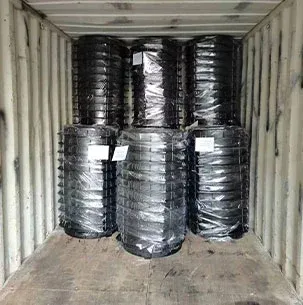manhole cover shape
The Shape of Manhole Covers More Than Meets the Eye
When one thinks of urban infrastructure, manhole covers might not be the first thing that comes to mind. Yet, these seemingly mundane circular plates serve as critical access points to the underground utilities that power our cities. Interestingly, the shape of manhole covers is a well-considered aspect of urban design that reflects engineering principles, safety considerations, and even historical traditions.
The Traditional Circular Shape
Manhole covers are predominantly circular, and there's a good reason for this. The circular design allows the cover to be placed back on its opening in any orientation without the risk of it falling through, which is a concern with other shapes like squares or rectangles. If a square cover is oriented incorrectly, it has the potential to fall into the hole diagonally, creating a serious safety hazard. Conversely, a circle's uniform shape eliminates this risk, making it the safest choice for urban planners.
Furthermore, manufacturing processes favor circular covers. The simplicity of the circular shape requires less material in construction compared to other shapes. This efficiency can lead to reduced costs for municipalities and service providers. In fact, using a circular design can also minimize the weight of the cover without compromising its strength, making it easier for workers to lift and replace.
Design Variations and Aesthetics
While the circular shape dominates, some urban areas have experimented with other geometric forms for aesthetic reasons. Innovative cities have introduced square, rectangular, or even uniquely shaped covers that reflect the character of the locality. For example, certain neighborhoods may feature manhole covers with intricate designs that celebrate local history, culture, or art, enhancing the visual appeal of the street environment.
In addition to aesthetics, some city leaders argue that unique shapes can serve as a point of interest for tourists and residents alike, fostering appreciation for the unnoticed details of urban life. Artisans often create limited edition designs, turning these utility covers into small public art installations. This allows cities to embrace creativity while balancing functionality.
manhole cover shape

The Role of Materials and Durability
Manhole covers are usually made of cast iron, a material chosen for its durability and strength. The choice of material is directly linked to the frequent exposure to varying weather conditions, heavy vehicular traffic, and the need for safety. These covers must withstand significant pressure without cracking or becoming dislodged. Modern engineering allows for advancements in materials, leading to lighter and more corrosion-resistant options that can extend the lifespan of the utility covers.
Moreover, the construction of manhole covers today often incorporates non-slip surfaces to ensure safety, especially in wet conditions. These surface designs help prevent accidents and navigate urban environments more safely, particularly for pedestrians during inclement weather.
Historical Context and Cultural Reflections
The genesis of manhole covers can be traced back to the early days of urbanization, where the need for access to underground sewer systems and utilities became paramount. Over time, as cities expanded, so did the complexity of these underground networks, making manhole covers not only practical fixtures but also symbols of urban infrastructure.
Interestingly, some cultures have developed traditions surrounding manhole cover design. For instance, Japan has become known for crafting elaborate manhole covers that incorporate local landmarks, flora, and fauna into their designs, leading to manhole cover tourism, where visitors seek out these unique artworks.
Conclusion
In conclusion, the shape of manhole covers is a reflection of practical engineering, safety concerns, cultural heritage, and artistic expression. While they are often overlooked by the average passerby, these covers serve as silent guardians of the vital systems that keep our cities running smoothly. As urban areas continue to evolve, the manhole cover will remain a steadfast feature, highlighting how function and aesthetic can merge in the fabric of urban life. In a way, they are the unsung heroes of city design, bridging the gap between the visible world above and the complex infrastructure that lies beneath.
-
The Smarter Choice for Pedestrian AreasNewsJun.30,2025
-
The Gold Standard in Round Drain CoversNewsJun.30,2025
-
The Gold Standard in Manhole Cover SystemsNewsJun.30,2025
-
Superior Drainage Solutions with Premium Gully GratesNewsJun.30,2025
-
Superior Drainage Solutions for Global InfrastructureNewsJun.30,2025
-
Square Manhole Solutions for Modern InfrastructureNewsJun.30,2025
-
Premium Manhole Covers for Modern InfrastructureNewsJun.30,2025
